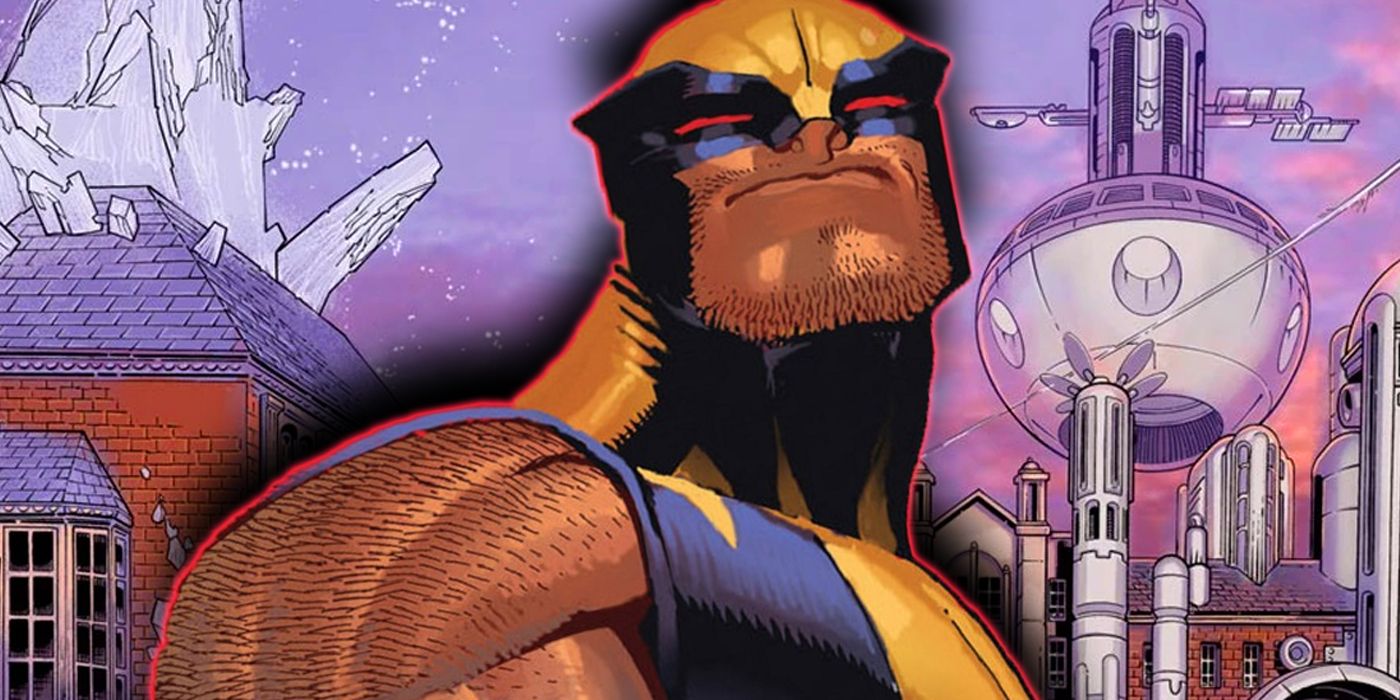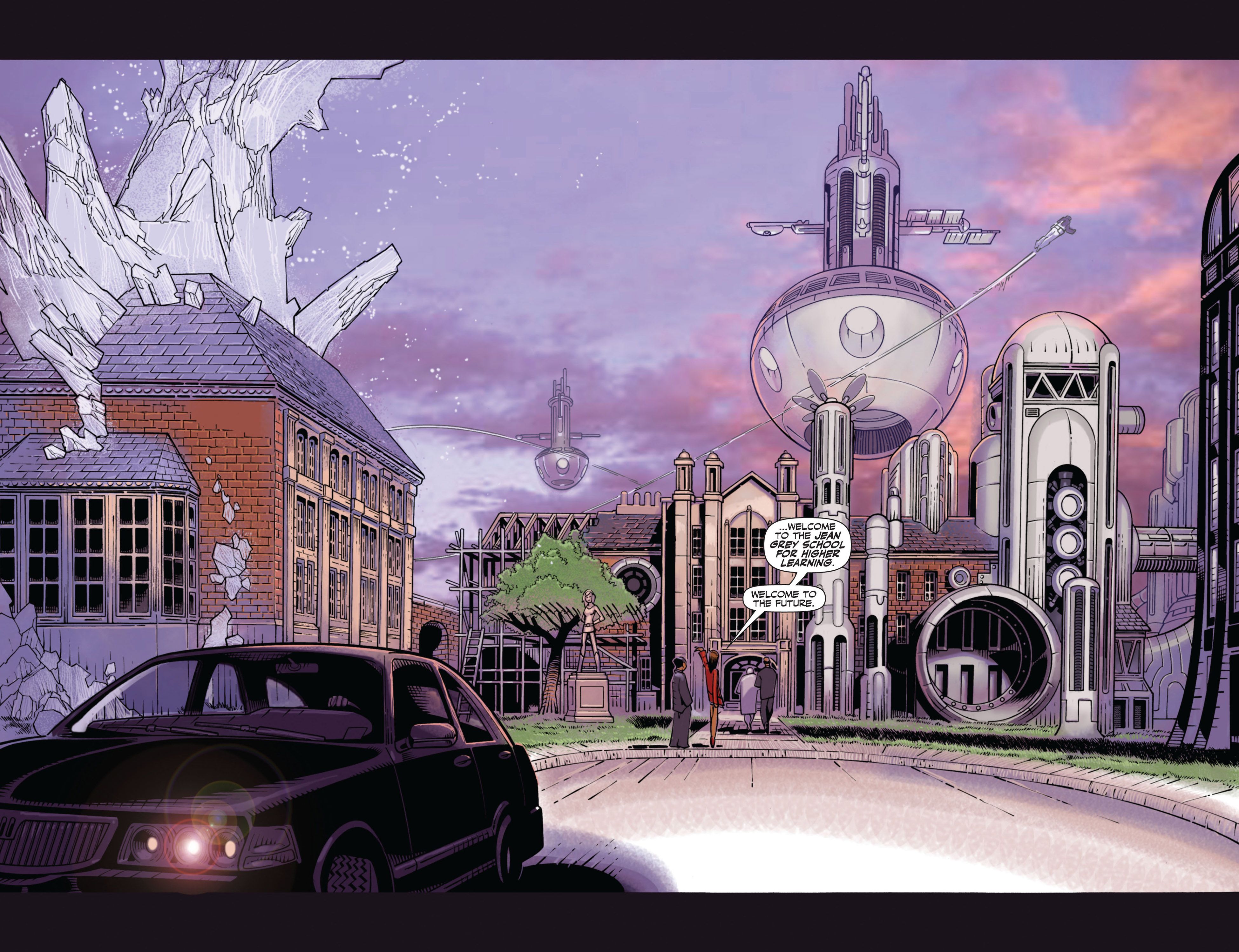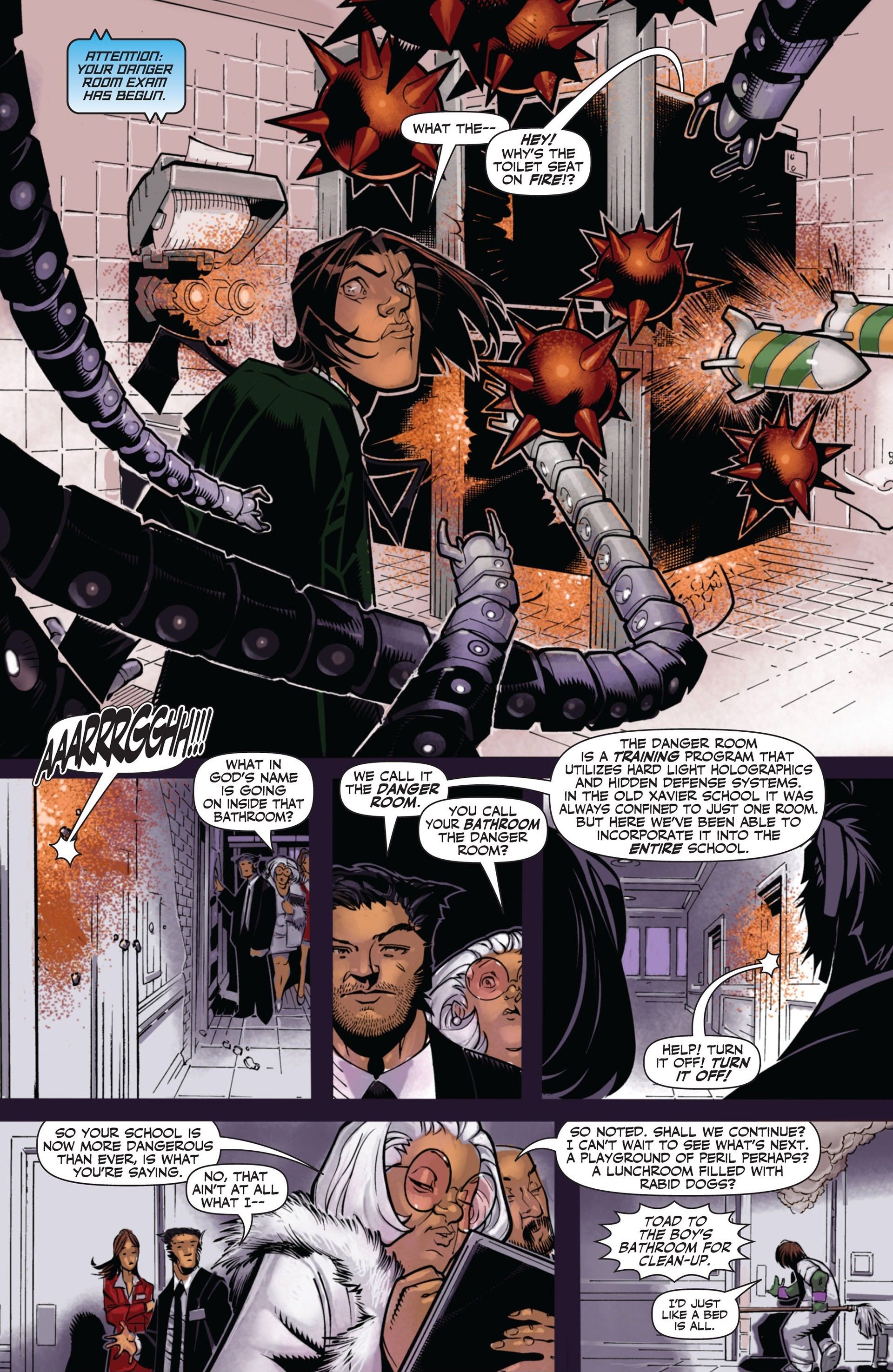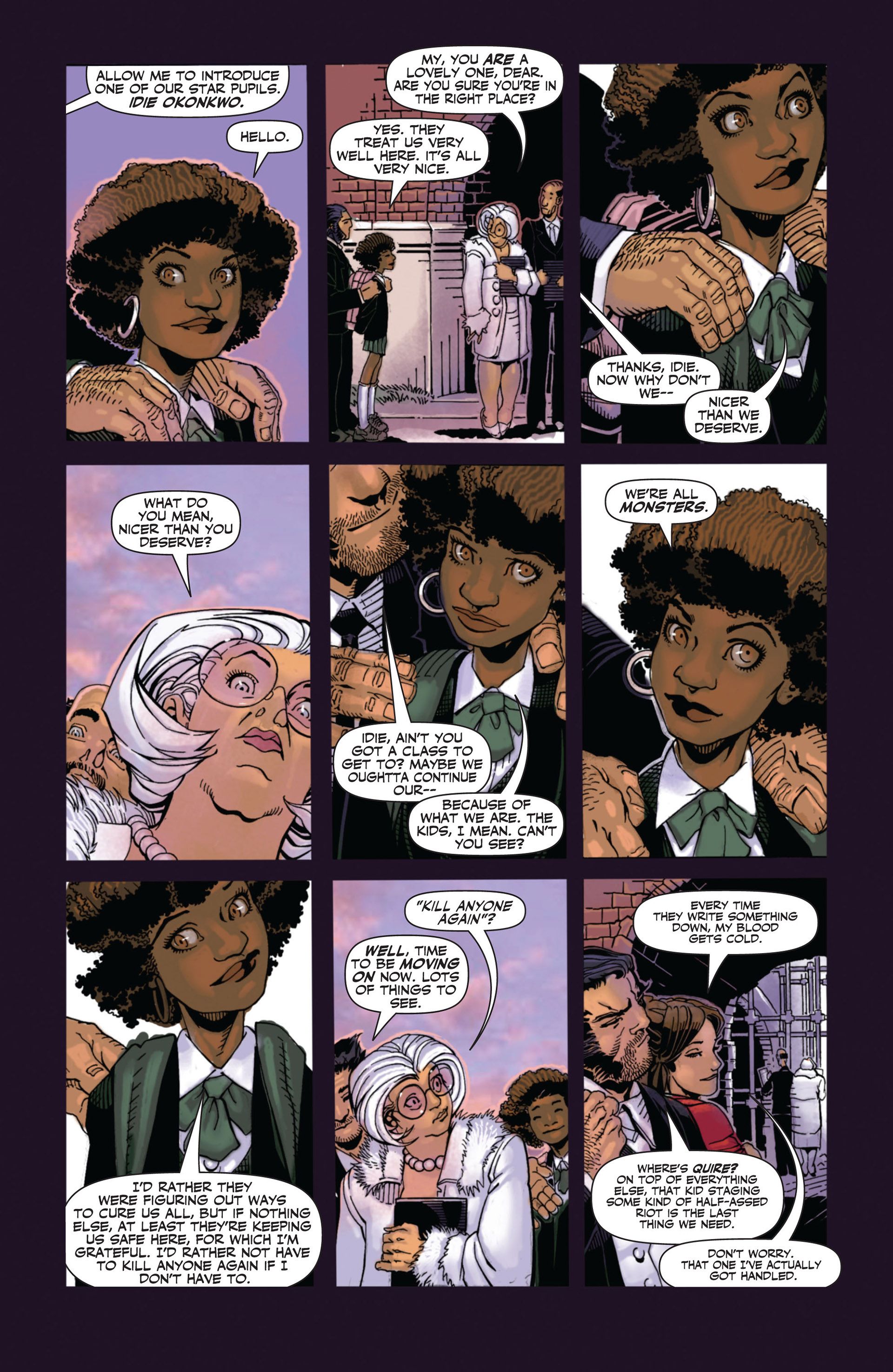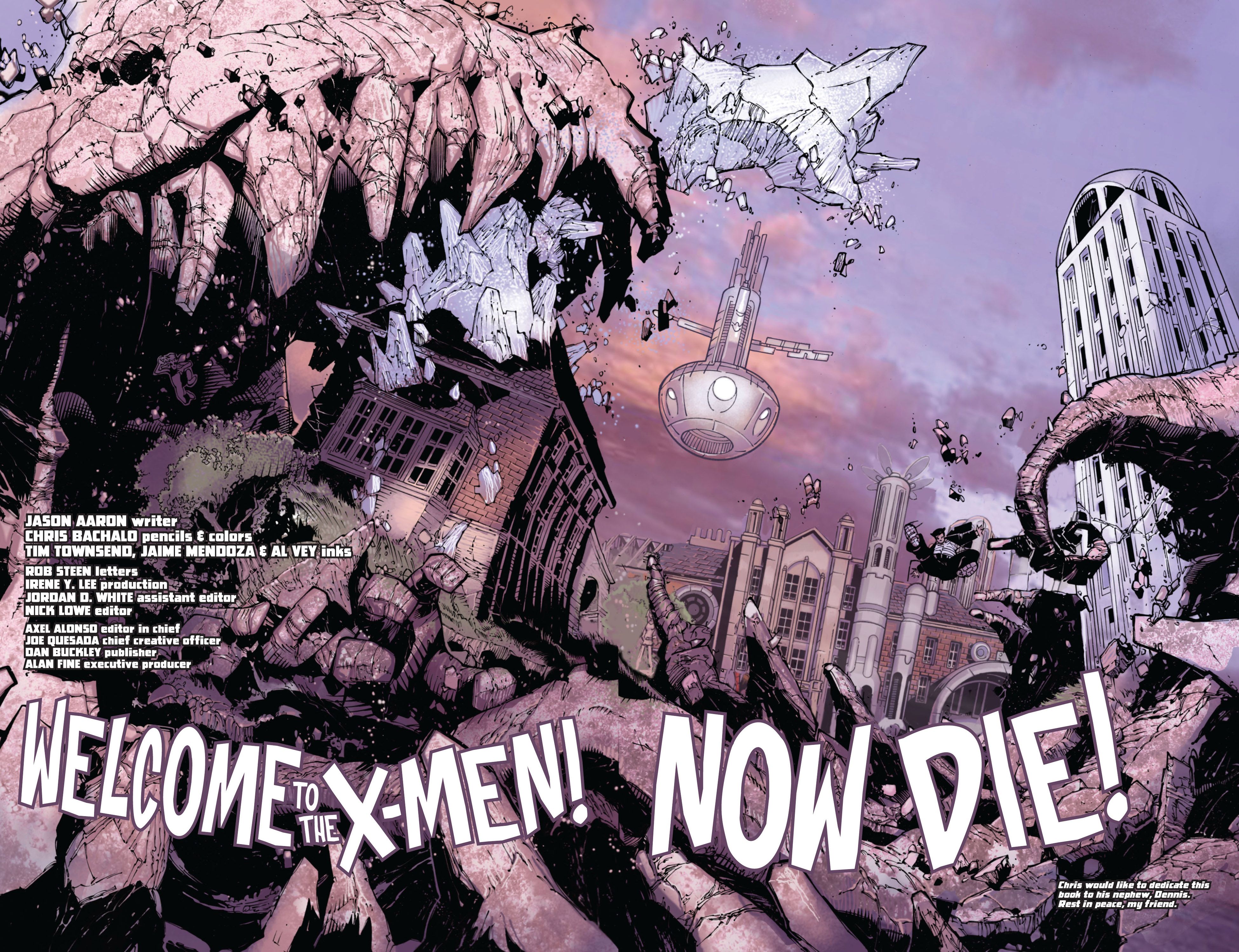Today, we look at the launch of Wolverine and the X-Men, ten years ago this month.
This is "Look Back," where every four weeks of a month, I will spotlight a single issue of a comic book that came out in the past and talk about that issue (often in terms of a larger scale, like the series overall, etc.). Each spotlight will be a look at a comic book from a different year that came out the same month X amount of years ago. The first spotlight of the month looks at a book that came out this month ten years ago. The second spotlight looks at a book that came out this month 25 years ago. The third spotlight looks at a book that came out this month 50 years ago. The fourth spotlight looks at a book that came out this month 75 years ago. The occasional fifth week (we look at weeks broadly, so if a month has either five Sundays or five Saturdays, it counts as having a fifth week) looks at books from 20/30/40/60/70/80 years ago.
Today, we head to October 2011 for the debut of Wolverine and the X-Men #1 by Jason Aaron, Chris Bachalo, Tim Townsend, Jaime Mendoza and Al Vey.
This issue came about following an unusual X-Men storyline called "Schism," where Wolverine and Cyclops came to a sticking point in both their relationship and that of the X-Men as a whole. You see, after the events of an earlier crossover destroyed the X-Mansion for the seven thousandth time (it might not have been actually seven thousand times), the X-Men headed out to San Francisco and then moved to an island known as Utopia, which they soon declared as an independent mutant nation. The problem was that as time went by, living isolated like they did took a toll on the younger X-Men, especially. During the Schism storyline, young Idie Okonkwo (whose superhero name was Oya) was the only thing standing between some of her X-Men teammates and some deadly Hellfire Club soldiers while on a field trip in San Francisco. She was in telepathic communication with Cyclops and Wolverine. Wolverine told her to escape to protect herself while Cyclops ordered her to take down the soldiers. She killed the soldiers and saved the other X-Men, but Wolverine was disgusted that she had to kill at such a young age.
So Wolverine decided to re-start the X-Men's school for young mutants and he went back to Westchester and rebuilt the X-Mansion. Kitty Pryde came with him as his co-headmaster/mistress. A number of X-Men remained with Cyclops as he got even more serious about the X-Men being soldiers. Wolverine cleverly re-named the school the Jean Grey School for Higher Learning...
The issue was a visual tour de force by Bachalo, with Aaron cleverly setting the story up as a pair of school inspectors from the state of New York were here to inspect the new school. So as they toured the school, we got to tour the school, as well, and it was quite the journey. One of the novel ideas was that the school itself WAS a Danger Room, so that any room could become a Danger Room...
After a number of years of dour X-Men comics, Aaron rightly decided to take a hard about face turn and presented Wolverine and the X-Men as a fun comic book with a good deal of humor, as Wolverine and Kitty are stuck on the tour from hell, as everything that COULD go wrong DID go wrong. In the meantime, though, we meet all of the students, new and old, including some clever new characters, including some non-mutants (Gladiator's son, Kid Gladiator, and a member of the Brood). Idie shows up and when you hear her talk, it really makes how much the X-Men go through stand out...
The villain behind Schism was a young kid named Kade Kilgore, who was starting the Hellfire Club up again and he festered division in the X-Men as part of his campaign to build more Sentinels. Now that Wolverine was opening up a school that vowed to integrate mutants into society, he couldn't have that, so he vowed to destroy the school and his first act was revealing that the school was built on a new version of the living island of Krakoa!!
What a roller coaster of a first issue! Bachalo was a mad genius on the issue, showing that few artists have quite the creative spirit that he does. This issue also helped to cement Bachalo's position as one of the pre-eminent X-Men artists of all-time, as he is now is way up on the list in terms of artists who have drawn the most issues of X-Men (he might even be #1. It's close between him and Salvador Larroca). Aaron introduced so many cool new characters that just this issue helped to redefine the X-Men for years after this (and I didn't even mention how Aaron helped rescue and start the redemption of Quentin Quire, one of the best new additions to the X-Men lore from Grant Morrison's iconic X-Men run).
If you folks have any suggestions for November (or any other later months) 2011, 1996, 1971 and 1946 comic books for me to spotlight, drop me a line at brianc@cbr.com! Here is the guide, though, for the cover dates of books so that you can make suggestions for books that actually came out in the correct month. Generally speaking, the traditional amount of time between the cover date and the release date of a comic book throughout most of comic history has been two months (it was three months at times, but not during the times we're discussing here). So the comic books will have a cover date that is two months ahead of the actual release date (so October for a book that came out in August). Obviously, it is easier to tell when a book from 10 years ago was released, since there was internet coverage of books back then.

